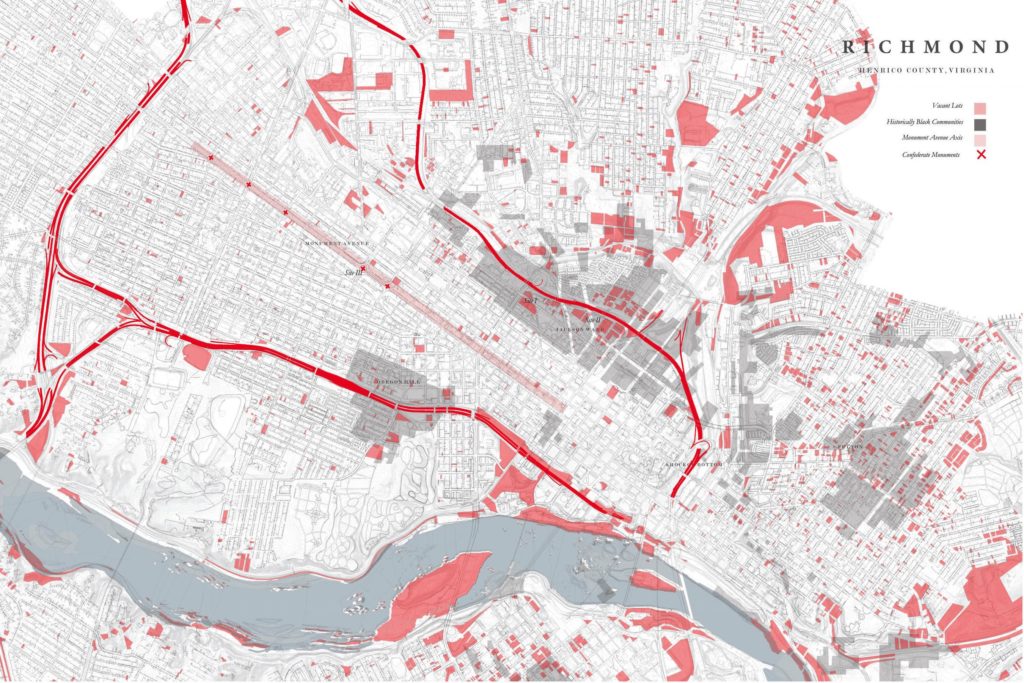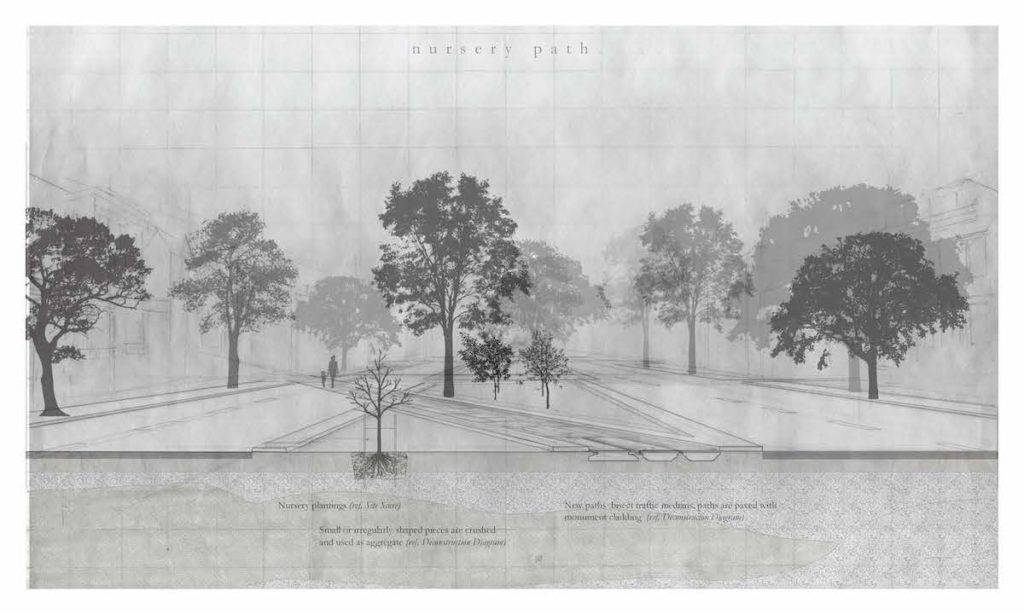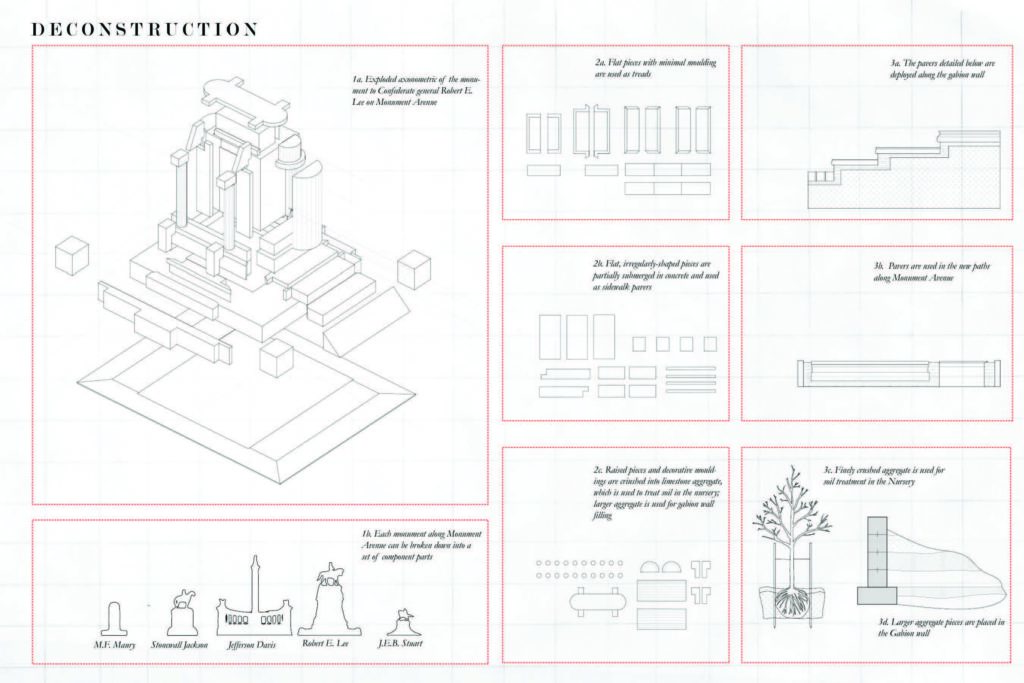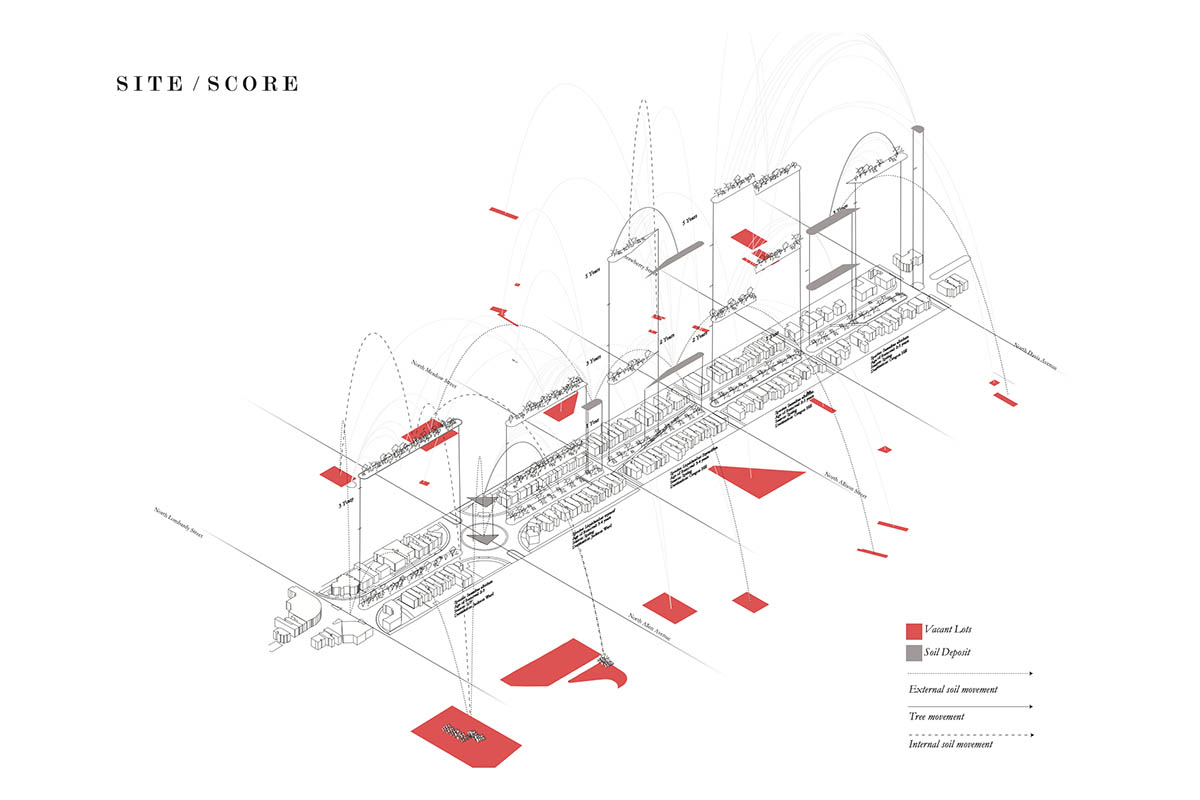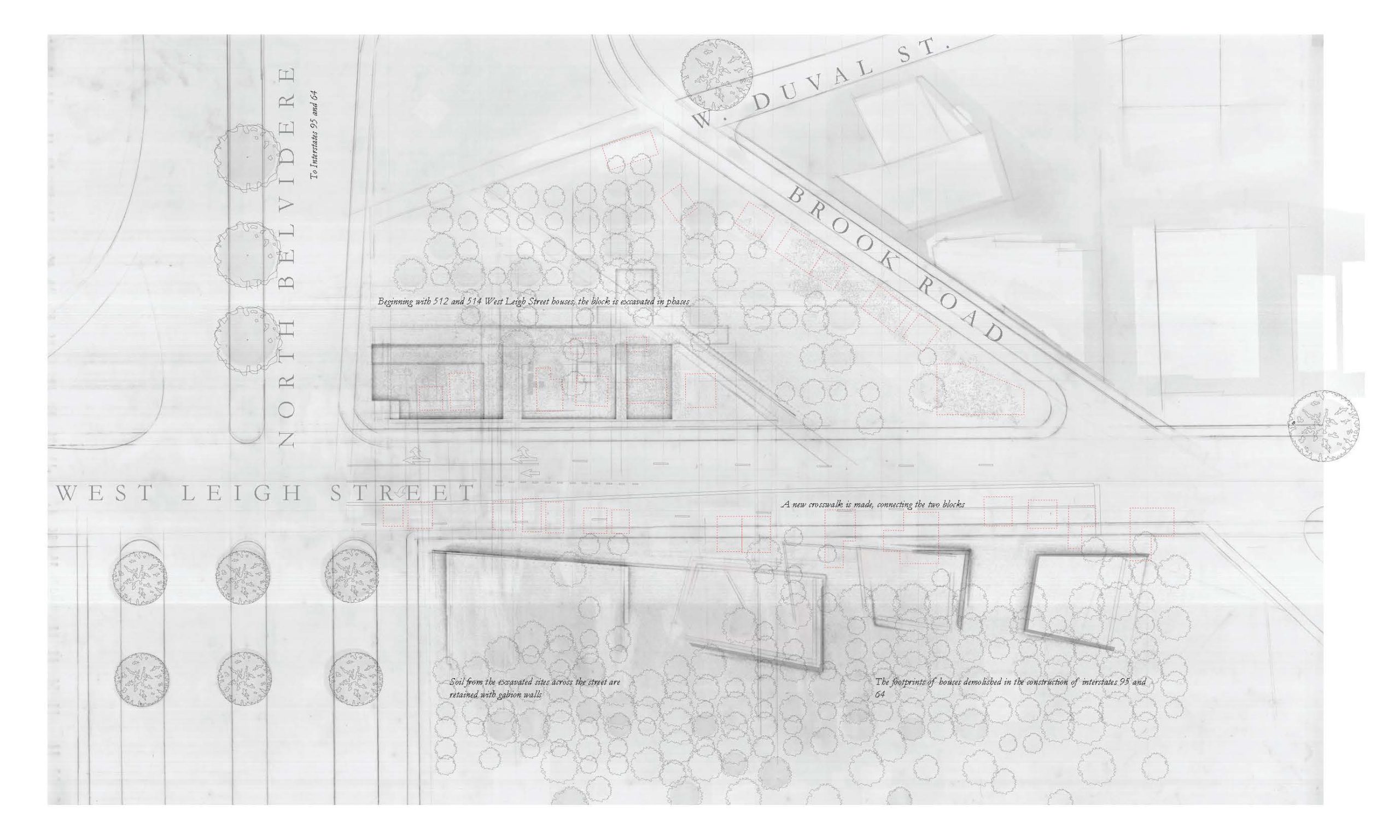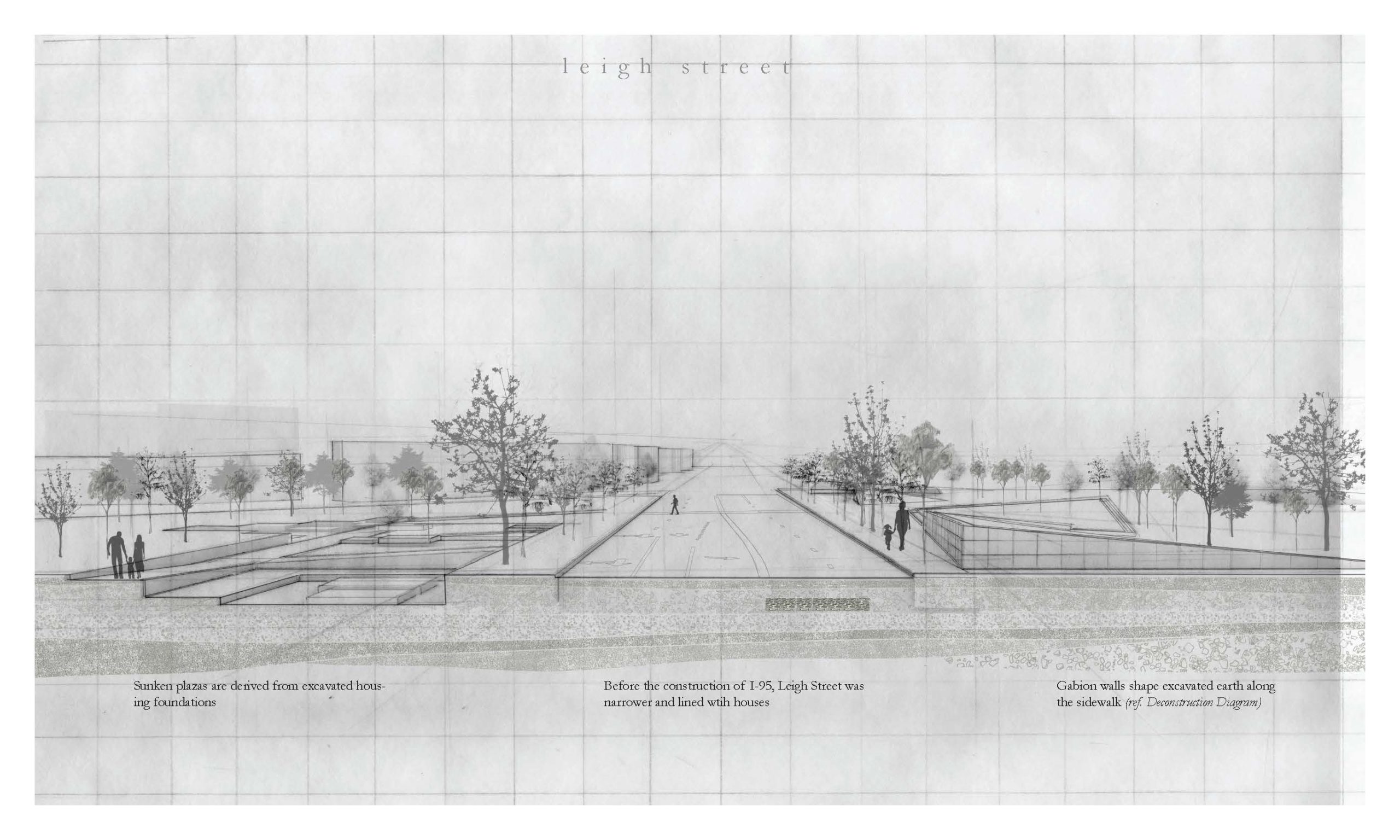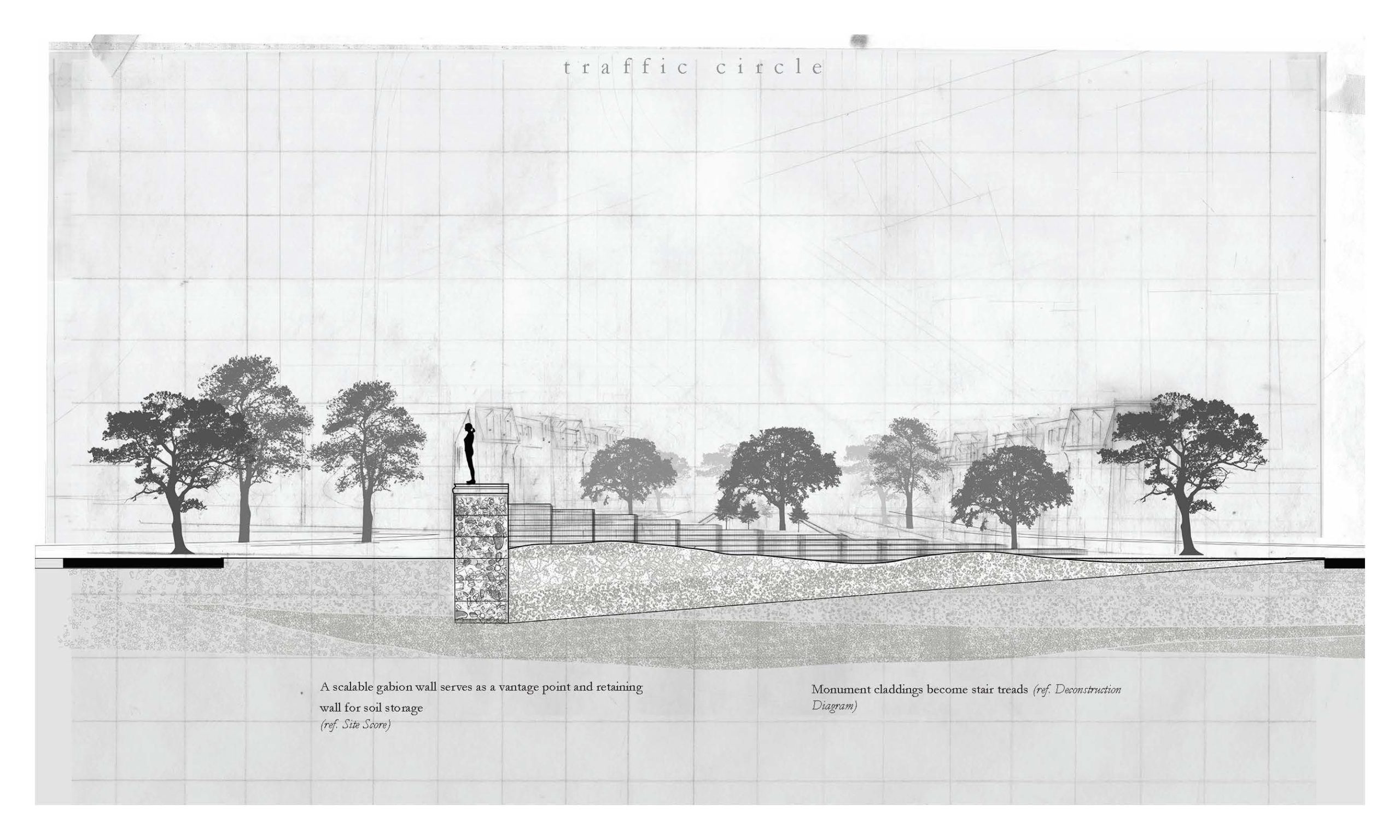Inveterate Scars: Confederate Monument Removal in the New South
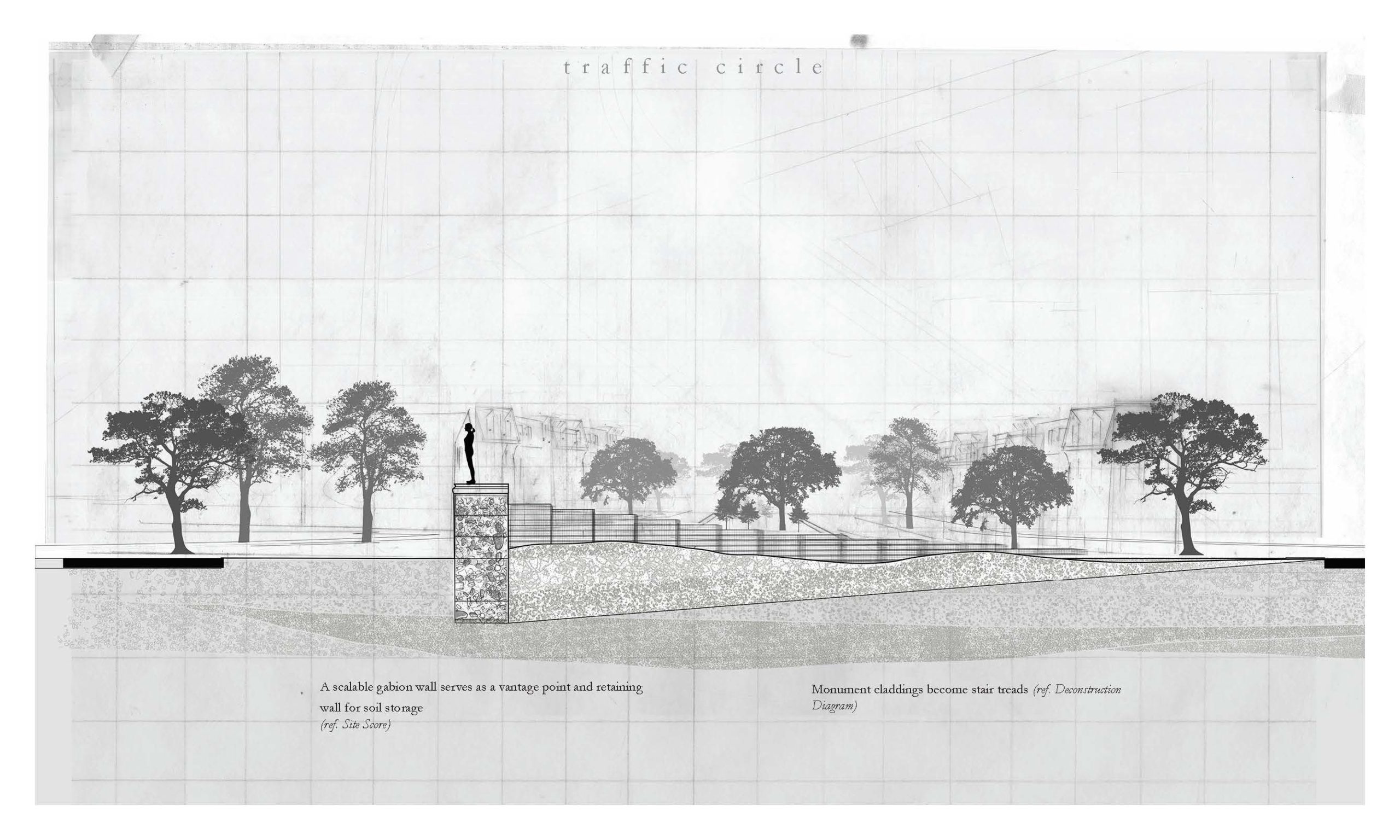
by Ann Hunter Lynch (MLA ’19)
The removal of Confederate monuments as it is carried out by city and state governments typically consists of the relocation of the figurative element of the monument. The pedestal, that which most readily distinguishes the monument in the urban landscape, remains. This fracture has created a new spatial typology: the post-monument site.
The post-monument site contests the actual and perceived spatial extents of the monument, suggesting that the removal of its figurative elements does not change its performance in the landscape. As such, an exploration of the post-monument site reveals that monumentality is a system comprised of the entire urban surface; and its destruction is, therefore, dependent upon the strategic destruction of the city itself.
This project imagines a post-monument site on Richmond, Virginia’s Monument Avenue. Built in 1890, Monument Avenue established a memorial archetype in the post-bellum south as it merged transportation infrastructure with monument figure. The five confederate monuments along the avenue are situated at major intersections. As each occur at critical nodes of circulation, the monuments dictate the city’s movement– rhythms of transit, commerce — are thus transformed into acts of ritual consecration.
Consecration depends on its reverse, twinned process of obliteration, a relationship that is observable in Richmond’s construction of interstates 95 and 64. Built in the 1950’s, the interstates bisected many of Richmond’s historically black communities in a municipal “slum clearance” effort. The act effectively destroyed these communities as their inhabitants had once known them, and these areas were quickly populated with vacant lots.
The project proposes the disruption of Monument Avenue as well as its reconstitution through a system of transfer between vacant lots and the avenue itself. Monument pedestals are dismantled and recycled as sidewalk pavers, gabion fill, and tree trench fill. The Avenue’s tree-lined medians are thinned and re-planted with nursery trees, destined for vacant lot sites.
Simultaneously, vacant lots become sites of community-informed excavation. Through the material exchange between the Avenue and the excavation sites, this project proposes a means by which existing monumental infrastructure is dismantled and a new method of retrieving and experiencing history in the city is introduced.
For decades, the design discipline has been complicit in constructing the physical environment of white supremacy. The removal of Confederate Monuments, redefined as a city-wide project, calls upon designers and planners to work with Black communities to create a new memorial landscape that excavates obliterated areas and with them silenced histories.
Inveterate Scars proposes an expansive definition of monumentality and memorialization that critiques broad historical narratives, honors and amplifies local forms of memory practice, and elevates the memorial qualities of lived, every day experience.
View Inveterate Scars on Hollis.
